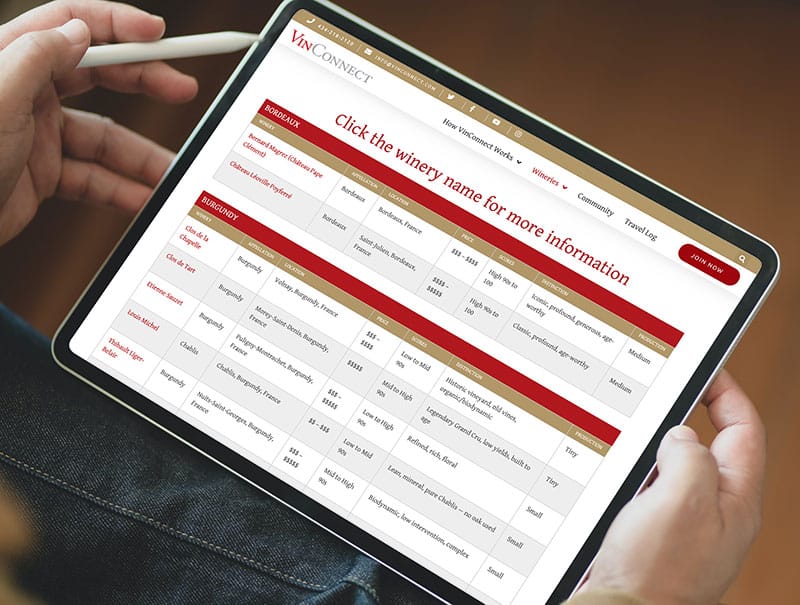Given the recent rapid growth of VinConnect it has been several months since I have had the time to get away and visit a wine region. After some consideration Spain bubbled to the top of my destination list — it had been years since I had been to Spain, and the combination of our existing winery partners there along with several potential new partners meant that it was time to make it happen. The trip didn’t disappoint, as I was very happy to get back and learn more about this interesting, dynamic and beautiful region. And once again I was thrilled to have a small audience of VinConnect customers along for the ride!
To kick things off we flew into Madrid, but immediately jumped in the car and headed toward our first stop some 2 hours away in Ribera del Duero. This region represents the valley of the famous Duero River that runs west through Spain and into Portugal (where there it is known as the Douro, and where its valley is the country’s most prominent wine region). The grapes in Ribera del Duero are Tempranillo, just as in Rioja, but I was surprised to learn that this region is much younger in wine production than Rioja, with only a few dozen wineries until a growth explosion in recent decades.
Monday
We kicked the trip off with a great visit at Bodegas Tinto Pesquera (website), owned by the famed Alejandro Fernandez and one of the early trailblazers and most established wineries in this region. In the 70s he purchased one of the original winery buildings in the region, which housed a press the was first used in the 17th century. Here we tasted several wines, including the base Crianza, the longer-aged Riserva, and a special cuvee Riserva Millenium, made only in certain vintages and vinified in 100% French oak rather than the American used in the other wines. That evening over dinner in the restaurant at the lovely Hotel Pesquera, we started with a glass of a fascinating white — the Alejairen 2015 made from the Airen grape indigenous to La Mancha. Then with our main courses we enjoyed a bottle of Tinto Pesquera Riserva 2006 that was drinking absolutely beautifully and showed the benefits of aging these wines that see so much oak.
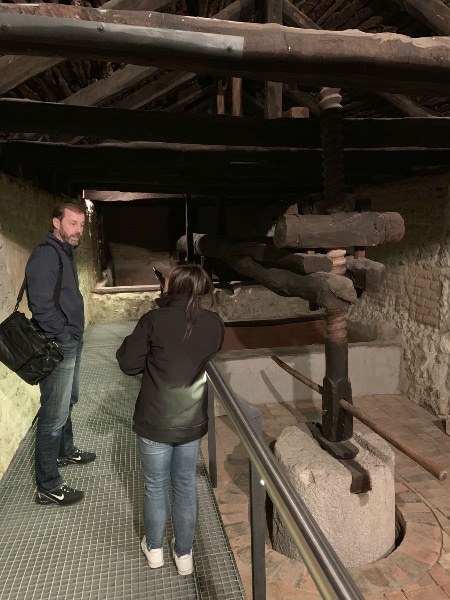
Tuesday
Tuesday began with a tour and tasting at CEPA 21 (website), the sister winery of Bodegas Emilio Moro. CEPA 21 was started ~20 years ago as an affiliated but separate project of Emilio Moro, developed to show off more modern techniques in contrast to the traditional methods typically employed in the region. The modern new winemaking facilities were complemented by the stylish tasting room. The wines here show great concentration and power, yet retained a certain polish and silkiness at the same time. My favorite of the tasting here was the Malabrigo 2014, made from a single vineyard and vinified 18 months in 100% new French oak.
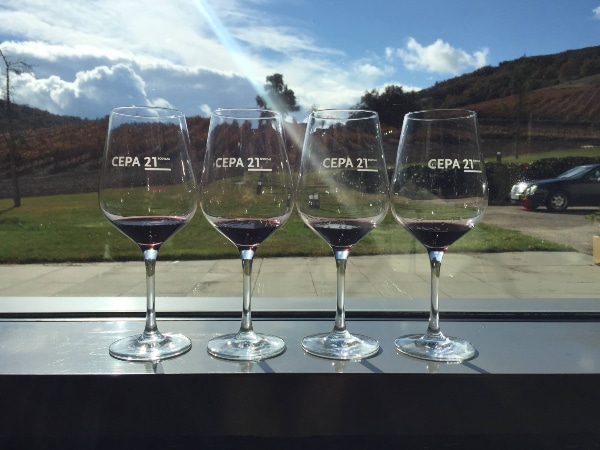
Our next stop was at the more traditional Bodegas Emilio Moro (profile, website), located next door to Alejandro Fernandez and Tinto Pesquera. Here the facilities are more traditional than CEPA 21, as is the winemaking, but the resulting wines are anything but rustic. We enjoyed a comprehensive tour and a lovely lunch, during which we enjoyed a lineup of current releases. My favorite here was the single vineyard Valderramiro 2014, which showed gorgeously perfumed red fruit and amazing depth and complexity, likely due to the plot’s 95-year old vines and clay soils.
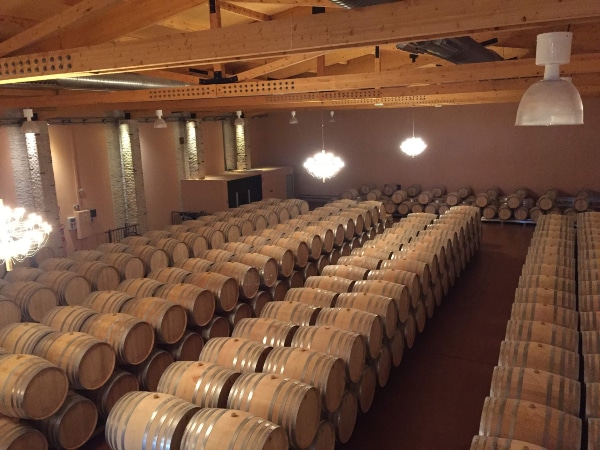
Our final stop for the day was at Abadía Retuerta (website). At the beautiful and modern tasting room we sampled a variety of their broad range of wines, which included a few Tempranillo blends and several very interesting and distinctive “experimental” single-variety wines. While the 100% Petit Verdot was certainly interesting, I didn’t think it was worth the E120 tariff; the Touriga Nacional at E40 however, I thought was delicious and a good value. Following our tasting we also dropped in to check out Abadia Retuerta’s luxury resort Le Domaine, rated the #1 hotel in Spain/Portugal by Conde Nast. Located in a recently remodeled 12th century monastery, the large property has only 30 rooms but includes a Michelin-starred restaurant and lavish spa. Wow.
Wednesday
After a long drive we arrived in Haro, the town at the center of the Rioja wine region. Our first few stops on Wednesday were to some of the local tasting rooms, which are conveniently located less than a mile from downtown and are open all day for drop-in tours and tastings.
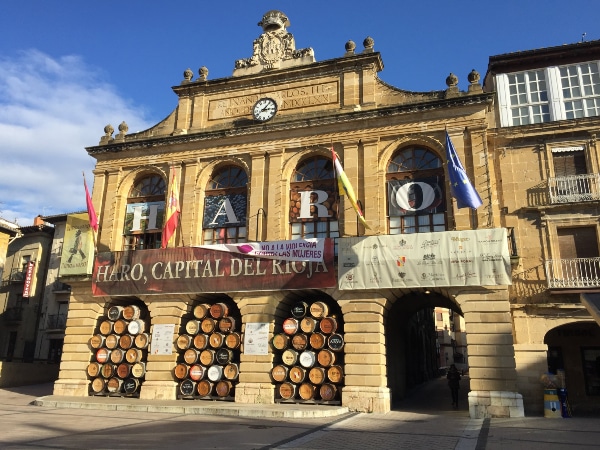
It was interesting to note how large and yet how densely planted the Rioja countryside is. Rioja measures 61000 hectares, some three times the size of Napa. Most wineries have multiple vineyards in various locations throughout the region. Not much vineyard mapping has been done, and for the most part the wines are all blends of fruit from different vineyard plots. Some trailblazers are pushing forward with vineyard definitions, soil descriptions and even vineyard-designated wines, but the biggest producers of high-volume wines are pushing back hard on this trend. It will certainly be interesting to watch this battle over more specific and descriptive vineyard definition in the years to come.
We kicked off at Marqués de Riscal (website), widely recognized for its Frank Gehry-designed hotel and spa. They have a very Napa/Disney-style tasting room and tour setup, but with our early start we weren’t in the mood to try their value-priced selections. The building and spaces, however, were fantastic, and one can easily see why it has become a very popular and well-recognized destination in the area.
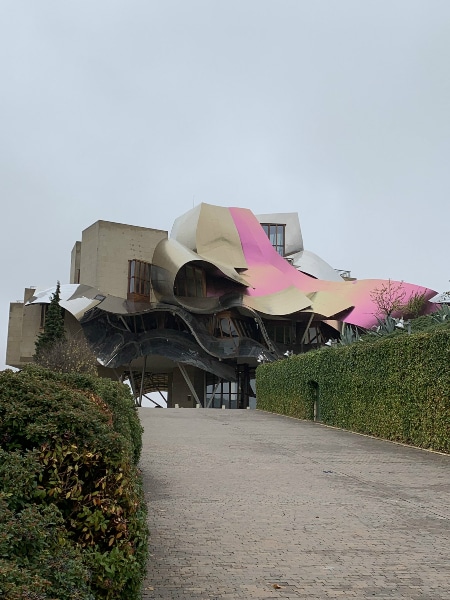
Our second stop was a highly-anticipated one, to CVNE (website). CVNE is one of the classic producers in the region, featuring traditionally-made wines in a restrained, elegant style. Our tasting here lived up to expectations, with the standout being an incredible Imperial Gran Riserva 2011 that was everything you would want in traditional Rioja.
Stop 3 was essentially next door at La Rioja Alta (website), a similarly-regarded producer of classically-styled wines. Here we had the great pleasure of tasting the Gran Riserva 890 from 2005, which earlier in the week had been named Wine Spectator’s #4 wine of the year for 2018. Poured from magnum (since the 750s had immediately sold out following the news) the wine seemed solid but quite compact and not giving much pleasure at this stage. Perhaps it just needed time to open up, but it was certainly disappointing relative to our expectations.
A final stop on this very busy day was at Marqués de Cáceres (website), where Deputy General Director David Losantos took us through a comprehensive tour and tasting that lasted well into the evening. The range and overall quality of their portfolio are impressive, with my favorite of the current releases being the Generation MC 2016, a 100% Tempranillo from a single-parcel of very old vines that showed great concentration in a modern interpretation of Rioja.
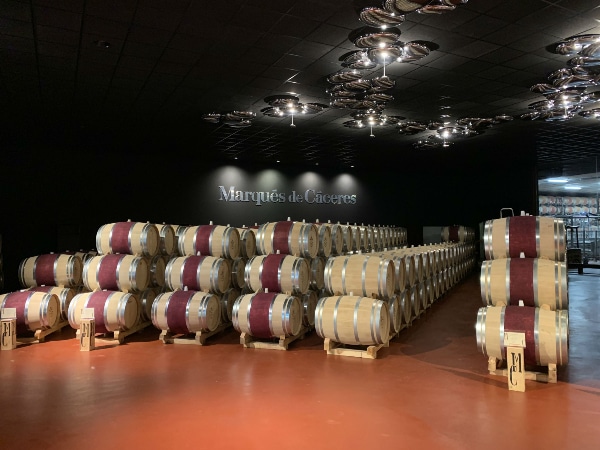
Dinner that evening is worth highlighting, as we visited Rioja’s renowned steakhouse Alameda. An unassuming place in the quiet Rioja village of Fuenmayor, their dry-aged, bone-in, Flintstone-style chops were simply out of this world. During dinner we greatly enjoyed a bottle Remelluri Riserva 2010, which was a perfect match for the steak and a delicious preview to our tasting the following day.
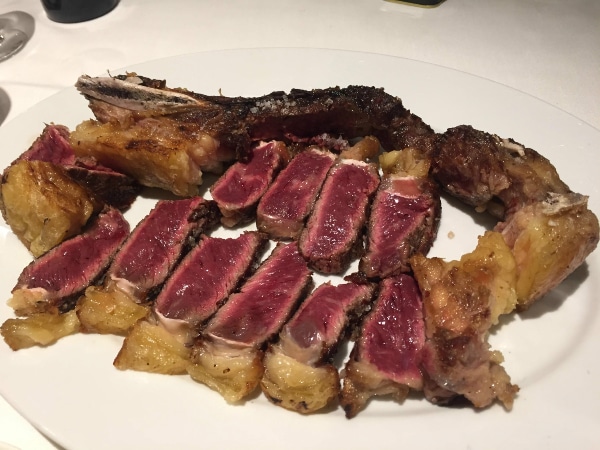
Thursday
On Thursday we kicked back into high gear, starting the morning with the consumer tour at R. López de Heredia (website). You can’t get more traditional than this in Rioja, from making their own barrels to the aging in cellars that are hundreds of years old. The wines are classically vinified, with extended aging that results in the wines being released as much as 5+ years after their neighbors (the current release vintage is 2006 for both the white and red). In addition to tasting those current releases, we were treated to a blind tasting of an older vintage from a 375ml bottle. Some significant age was evident but there was still lots of life, leaving most of the group guessing vintages in the 1980s. Wrong!! 1970 was the correct vintage, which provided powerful testimony as to just how well their wines can continue to age with proper cellaring.
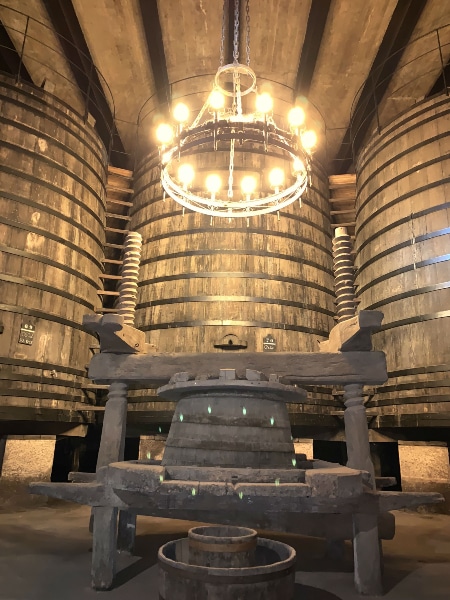
Our next stop was a much-anticipated tour, tasting and lunch at Bodegas ARTADI (profile, website). We were hosted by the proprietor Juan Carlos Lopez de Lacalle and joined by a photographer from Wine Spectator taking snapshots for an upcoming feature on the winery. Following a tour of the renowned El Pisón vineyard, we enjoyed a delicious lunch and tasting of several of their single vineyard and collector’s series wines, each of which showed great concentration and good minerality.
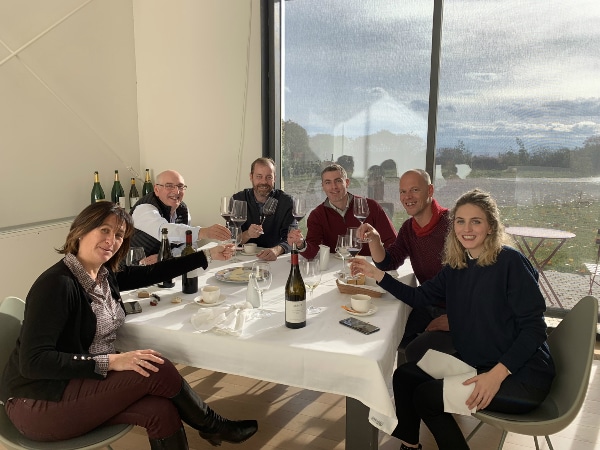
Thursday’s final stop was at Remelluri (website), a very interesting producer whose style straddles both the traditional and modern camps. Their winery in the foothills of the Sierra Cantabria mountains dates back several hundred years, when its buildings and lands were used to supply food and wine to a monastery atop the mountain high above. Here legendary winemaker Telmo Rodriguez fashions beautiful wines from exclusively estate fruit, with layers of depth and complexity that are profound. While all the wines here were impressive, my favorite was the Riserva 2012, made from a barrel selection with 85% Tempranillo supplemented by several other varieties (including some white!)
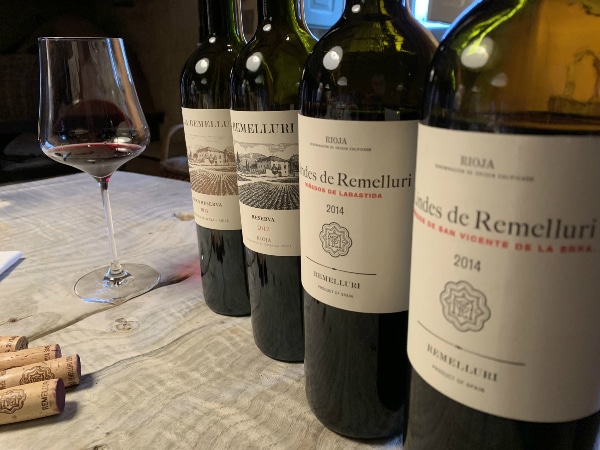
Back on the road, we stopped in Zaragoza for dinner at a great wine restaurant called Absinthium and a quick tour of the city, including an incredibly impressive Cathedral that is its heart.
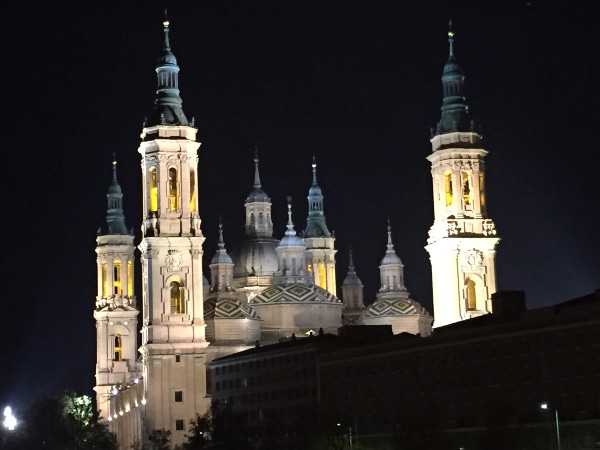
Friday
After an early start on Friday we found ourselves in Priorat, where we started with a tour and tasting at Celler Vall Llach (profile, website) in the small village of Porrera. The Vall Llach winery anchors the once-failing village, and its growth has breathed much life back into the town which now boasts several hotels and restaurants. We tasted through an impressive lineup of new releases (my favorite being the Porrera 2016), but the real show-stopper was the Vi Ranci, a wine made in a style similar to an oloroso sherry from a solera dating to 1927. It was insanely delicious!
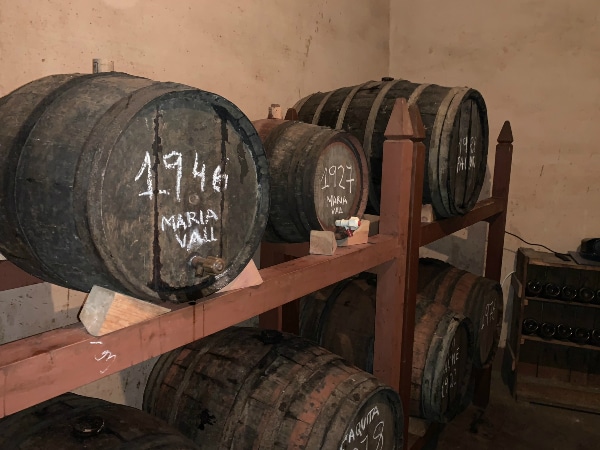
From there we ventured on toward Barcelona, stopping in Penedès where we visited with notable Spanish sparkling producer Raventós i Blanc (website). The quality of the método tradicional (Champagne-method) wines here is truly impressive, and they could easily be right at home in a blind tasting of top Champagnes. We enjoyed a nice tour, tasting and lunch, including a comprehensive history lesson of the family’s essential role in the development of leading Cava producer Codorníu.
Our final stop for the day was Parés Baltà (website), a highly-regarded, fully-biodynamic producer known for their impressive Cavas and dry wines.
We ended the week with a couple of outstanding dinners in Barcelona at wine-centric restaurants Gresca and Monvinic (both VERY highly recommended), which gave us a chance to reflect on and synthesize our week in Spain’s major wine regions.
Our main takeaways were that Spain has a truly impressive wine culture — dozens of great producers, professional tours/tasting rooms/wine hospitality, many great resorts and delicious restaurants, and all at prices that were remarkably inexpensive for the quality. For wine fans interested in seeking out new travel destinations, I very highly recommend Spain and would be happy to chat with you personally to provide any more insights than this article was able to include.
